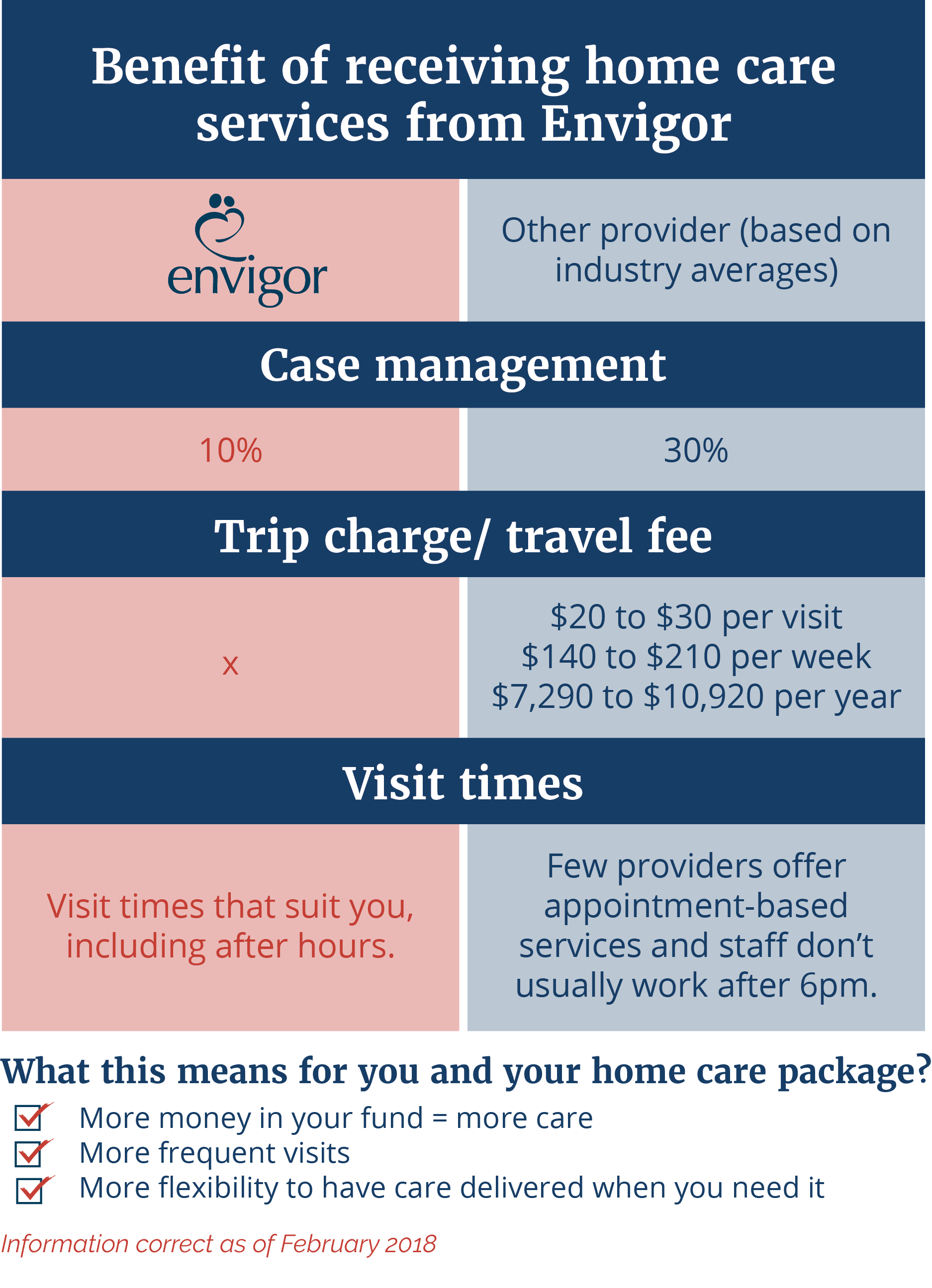If you are one of the lucky older Australians who have been allocated a Home Care Package, then some of this information won’t be new although hopefully some of the tips about maximising your package may be of assistance.
Similarly, if you are waiting to have a Home Care Package allocated to you, then this information will hopefully give you food for thought as you plan what services you wish to receive when your package is allocated.
Changes to the Home Care Package program
Unless you have been living in a vacuum for the last few years or if you have been lucky enough not to have needed support to stay at home, there have been some significant changes to the way in which community based aged care services are provided in this country.
In February 2017, the Home Care Package (HCP) program – the program used to support older Australians to remain in their own homes – was given its biggest shake-up since their inception in the 1990s. The primary pillar of this reform, was allocation of these packages to consumers as part of a Consumer Directed Care (CDC) philosophy to put consumers firmly in charge of their care as they age.
The implementation of CDC has had some teething problems, including issues with the technical system used to administer the program and most significantly the creation of a national queue for such services that sits at around 121,000 at the time of writing. If you are one of these 121,000 then this situation is less than ideal, with the government acknowledging that it had grossly underestimated the level of need in the community for such care. If, however, you are one of the lucky people who have a home care package then you will be familiar with how they work.
How the home care package program works
The HCP program is typified by four levels of care package (1-4), with level 1 being the equivalent of basic care and level 4 intended to support people with more complex care needs. Since February 2017, there has been a lot of jockeying in the market with providers now having to demonstrate a fair degree of transparency to consumers regarding line items of expenditure from their HCPs.
What has become obvious is that there are significant differences between providers in regard to what they charge for what can be best described as administrative overheads, costed to the package before the consumer receives any care. The industry average for this overhead has been described as being around 45 per cent of the value of the package, which for a level 1 package at $8000 subsidy value, doesn’t leave a lot for care. In a market driven service sector, it stands to reason that those providers who are seen to be charging a reasonable amount for the overheads associated with an HCP will outperform those providers that charge exorbitant amounts in terms of client numbers.
Envigor is one of the few providers charging an overhead that is fair and reasonable and provides value for money for consumers. At a flat rate of 10 per cent the value of the package, Envigor has seen nearly 300 people choose them as their HCP provider since February last year.
For all Envigor clients, the move to a CDC model has seen those moving their HCP to Envigor receive significantly more care than they were receiving from their previous provider.
Hidden benefits of Envigor care
The following illustrates how a client of Envigor who receives government subsidised care through an HCP with Envigor is better off overall. Assume the person is in receipt of a level 4 HCP, the value of which is $49,500 per year in government subsidy. There is also a basic daily fee set by the government and payable by all consumers regardless of their income but for the purposes of this exercise, we will just consider the value of the package. After the 10 per cent case management and administration fee ($4950), the consumer is left with $44 550 to spend on their care (as opposed to the $34 650 available for care if the consumer is charged 30% case management and administration from their package).

For people living in their own homes, the benefits of choosing Envigor don’t stop there. Many providers also charge the consumer a ‘trip charge’ or ‘travel fee’ of anything between $20 and $30 on average per visit just to get to the consumer’s front door. Over the course of a week receiving one visit per day, this can reduce the value of the package by $140 to $210 (or $7280 to $10 920 over a year), and in the process significantly reduces the amount of care the person receives through that package.
By contrast, and depending on where they live, Envigor clients in receipt of an HCP are not charged travel time to get staff to their front door. There are exceptions to this rule, especially for people living in remote areas or a long way from a major population area, but travel charges will ALWAYS be negotiated with the consumer when the budget is being developed and will be allocated on their statement as a specific line item.
This means that they can often receive TWO visits from an Envigor carer as opposed to only ONE visit if they were using another provider. Because Envigor is focused on the needs and priorities of our clients, people can have their services provided at the time/s of the day that suits them. If they want to shower at 7 pm, then that is when the visit is scheduled. Unfortunately, few other providers offer appointment-based services, nor do their staff work after 6 pm in the evening, unless there are extenuating circumstances.
